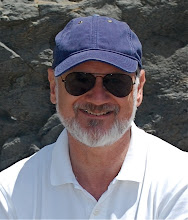
The work of Marcial Losada is not well known, but deserves to be. He describes two states of human functioning - Flourishing and Languishing. Flourishing is a state of goodness, generativity, growth and resilience. Languishing is the opposite - impairment and limitation. According to Losada, a key predictor of flourishing - whether of individuals, marriages, teams or organizations - is the ratio of positivity to negativity affect (the Positivity Ratio).
Working from within a nonlinear dynamic systems approach, Losada represents flourishing and languishing in a set of mathematical equations. Being mathematically challenged, I'm not going to go there except to highlight some findings.
In his work with teams dating back to 1999, Losada learned that higher functioning business teams (based on the criteria of profitability, customer satisfaction, and 360 degree evaluations) had significantly higher positivity-negativity ratios than low performance teams. Based on extensive sampling of speech acts over time, Losada found that flourishing is associated with positivity ratios of 2.9. Those identified as languishing had positivity ratios that fell beneath 2.9. There can be too much positivity on a team (that upper limit was found at a positivity ratio of 11.6346).
In a paper I will reference below, Losada and Fredrickson connect the positivity ratio to Fredrickson's broaden-and-build theory of positive emotions. What lab experiments have shown is that negative emotions narrow people's thoughts and actions (e.g., fight, flight), while positive emotions widen the range of thoughts and actions (e.g.,play, explore). Flourishing teams - those with a high positivity ratios - are characterized by:
Goodness - happiness, satisfaction
Generativity - broadened thought-action repertoires
Growth - enduring personal and social resources
Resilience - survival and growth in the aftermath of adversity
Positivity is nonlinear - small inputs can yield large outcomes. Low performing teams exhibit linear control while high performing teams exhibit nonlinear control. In the language of chaos theory, low to moderate teams are associated with point attractors (like being confined in a small cell) and repetitive limit cycles (like being confined in a slightly larger cell where you can walk around in a repetive pattern). High performing teams are associated with chaotic attractors (a space in which behavior doesn't repeat itself, but still remains within certain bounds). An example of the latter might be a team guided by a shared vision with a few simple 'rules' guiding interactions).
What does all this mean? To put it very simply and crudely good feelings go a long way to making good, adaptive, flourishing teams. Generating a culture of positivity, however, can be difficult because there is also what is called a 'negativity bias' - the bad is stronger than the good! One study at Penn State University showed that independent of culture and age, we have a 2.667 bias toward recalling more negative than positive emotions. The challenges of working together across distances probably increase that negativity bias, so always be on the lookout for mindsets and behaviors that drop you below the Losada line at 2.9!





1 comment:
Excellent synthesis of my work, Terence. It's not easy to say in a few words what took more than a decade to develop.
I must add that the ratio of positivity to negativity, though it is central to my model, is not the whole model. A high performance team or relationship must also find a balance between inquiry and advocacy as well as other versus self orientation. And, most importantly, it must reach high level of connectivity through mutual trust and the willingness to learn from each other.
Post a Comment